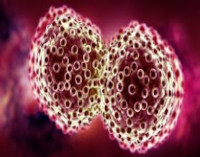Antiproliferative Potential of Ethanol Leaf Extract of Motandra guineensis (Thonn.) A.DC. (Apocynaceae) against Human Melanoma and Ovarian Cancer Cells
Main Article Content
Abstract
In ethnomedicine, Motandra guineensis (Thonn.) A.DC. (Apocynaceae) is used to massage abscessed gums and manage pain. This study aimed to evaluate the antiproliferative effect of leaves of M. guineensis against human ovarian (OVCAR3) and melanoma (MDA-MB-435) skin cancer cells. Crude ethanol extract and fractions of M. guineensis leaves were evaluated for antiproliferative effect on OVCAR3 and MDA-MB-435 cells using cell viability assay at 2 and 20 µg/ml. In addition, the inhibitory effect of extract and fractions on nitric oxide (NO) production with lipopolysaccharide (LPS) stimulation (Greiss assay) on murine macrophage cells (RAW 264.7) at 0.3125 – 10 µg/ml was evaluated. Cell viability was evaluated using murine macrophage cells while toxicity assessment was done on Vero cells. Antiproliferative activity profile (% cell death) of extract and fractions followed the order: butanol (30% and 23%) > aqueous (28% and 21%) > ethyl acetate (22% and 19%) > crude (22% and 0%) at 20 μg/ml in OVCAR3 and MDA-MB-435 cell lines respectively. Percentage NO inhibitory activity showed hexane fraction with the highest activity and aqueous fraction with the least activity at 10 μg/ml. Extract and fractions were less toxic in Vero cells when compared to the standard drug, Tamoxifen. Toxicity assessment using murine macrophage cells showed no significant difference in cell viability when compared to standard. Results indicate antiproliferative potential, NO inhibitory potential and safety of crude ethanol leaf extract and fractions of M. guineensis.
Downloads
Article Details

This work is licensed under a Creative Commons Attribution-NonCommercial-NoDerivatives 4.0 International License.
References
World Health Organisation (WHO). WHO global report on Traditional and Complementary medicine 2019. Available from: https://www.who.int/publications-detail-redirect/978924151536.
Burkill HM. Useful plants of West Tropical Africa (Vol. 1). Families A-D. England: Royal Botanical Gardens Kew; 1985; 166.
Sofidiya MO, Alokun AM, Fageyinbo MS, Akindele AJ. Central nervous system depressant activity of ethanol extract of Motandra guineensis (Thonn) AD. aerial parts in mice. Phytomed Plus. 2022; 2(1): 100186, ISSN 2667-0313.
Odesanmi OS. A comparison of the hormonal and metabolic effects of Motandra guineensis seed extracts and menstrogen on mid-gestational pregnant rabbits. Nigerian J Health Biomed Sci. 2005; 4(2): 134-138.
Ferlay J, Colombet M, Soerjomataram I, Parkin DM, Piñeros M, Znaor A, Bray, F. Cancer statistics for the year 2020: An overview. Int J Cancer. 2021; 149 (4): 778-789
World Health Organisation (WHO). Cancer fact sheets 2022. Available from: https://www.who.int/news-room/fact-sheets/detail/cancer.
Chen S, Cao Z, Prettner K, Kuhn M, Yang J, Jiao L, Wang Z, Li W, Geldsetzer P, Bärnighausen T, Bloom DE, Wang C. Estimates and Projections of the Global Economic Cost of 29 Cancers in 204 Countries and Territories From 2020 to 2050. JAMA Oncol. 2023; 9 (4):465-472.
Bray F, Parkin DM, African Cancer Registry. Cancer in sub-Saharan Africa in 2020: A review of current estimates of the national burden, data gaps, and future needs. Lancet Oncol. 2022; 23(6):719-728.
Federal Ministry of Health. Nigeria National Cancer Control Plan (2018-2022) 2018. Available from: https://www.iccp-portal.org/system/files/plans/NCCP_Final%20%5B1%5D.pdf.
Mathur G, Nain S, Sharma PK. Cancer: An overview. Acad J Cancer Res. 2015; 8 (1): 1-9
Siegel RL, Miller KD, Wagle NS, Jemal A. Cancer statistics, 2023. CA Cancer J Clin. 2023; 73: 17-48.
Khan FH, Dervan E, Bhattacharyya DD, McAuliffe JD, Miranda KM, Glynn SA. The Role of Nitric Oxide in Cancer: Master Regulator or NOt? Int J Mol Sci. 2020; 21(24):9393. doi: 10.3390/ijms21249393. PMID: 33321789; PMCID: PMC776397.
Muñoz-Pérez V, Cariño R, López-Santillán I, Salas-Casas A. Inflammation in Cancer Development. Mexican J Med Res. 2022; 10: 48-51. 10.29057/mjmr.v10i19.8112.
Chhetri BK, Bhanushali R, Liang Y, Cepeda MR, Niradininoco AK, Soapi K, Wan B, Qader M, Franzblau SG, Kubanek J. Isolation and Characterization of Anti-Mycobacterial Natural Products from a Petrosia sp. Marine Sponge. J Nat Prod. 2023; 86 (3): 574-581.
Ren Y, Anaya-Eugenio GD, Czarnecki AA, Ninh TC, Yuan C, Chai H-B, Soejarto DD, Burdette JE, Carcache de Blanco EJ, Kinghorn AD. Cytotoxic and NF-κB and mitochondrial transmembrane potential inhibitory pentacyclic triterpenoids from Syzygium corticosum and their semi-synthetic derivatives. Bioorg Med Chem. 2018; 26: 4452-4460.
Youn I, Han K, Gurgul A, Wu Z, Lee H, Che C-T. Chemical constituents of Entandrophragma angolense and their anti-inflammatory activity. Phytochem. 2022; 201:113276. doi: 10.1016/j.phytochem.2022.113276. Epub 2022 Jun 15. PMID: 35714737.
Uddin MF, Das AK, Saha K. Antioxidant and Cytotoxic Activities of Stem and Root Extracts of Catharanthus roseus cultivated in Bangladesh. Trop J Nat Prod Res. 2022; 6(9): 1455-1463.
Onohuean H, Onohuean FE, Igbinoba SI, Ezeonwumelu JOC, Agu PC, Ifie JE, Deusdedit T, Aja PM. Elucidation of chemical profiles and molecular targets of Mondia whitei leave fractions bioactive as novel therapeutics: an in vitro and in silico assay. J Genet Eng Biotechnol. 2022; 20(1):170. doi: 10.1186/s43141-022-00440-2.
Kumar A, Selvakumar S. Antiproliferative efficacy of Tabernaemontana divaricata against HEP2 cell line and Vero cell line. Pharmacogn Mag. 2015; S46-52. doi: 10.4103/0973-1296.157682.
Rosales PF, Marinho FF, Gower A, Chiarello M, Canci B, Roesch-Ely M, Paula FR, Moura S. Bio-guided search of active indole alkaloids from Tabernaemontana catharinensis: Antitumour activity, toxicity in silico and molecular modelling studies. Bioorg Chem. 2019; 85: 66-74. ISSN 0045-2068.
Nunes CdR, Barreto Arantes M, Menezes de Faria Pereira S, Leandro da Cruz L, de Souza Passos M, Pereira de Moraes L, Vieira IJC, Barros de Oliveira D. Plants as Sources of Anti-Inflammatory Agents. Molecules. 2020; 25(16):3726. https://doi.org/10.3390/molecules25163726.
Tung NKT, Dung DT, Kiem PV, Hang DTT, Nhiem NX, The NV, Seo Y, Kang JS, Tai BH. Alkaloids and lignans from aerial parts of Rauvolfia tetraphylla inhibit NO production in LPS-activated RAW 264.7 cells. Chem Biodivers. 2024; 22:e202302123. doi; 10.1002/cbdv202302123.
Gupta M, Mazumder UK, Gomathi P, Selvan VT. Antiinflammatory evaluation of leaves of Plumeria acuminata. BMC Complement Altern Med. 2006; 6:36. doi: 10.1186/1472-6882-6-36. PMID: 17081283; PMCID: PMC1654182.


